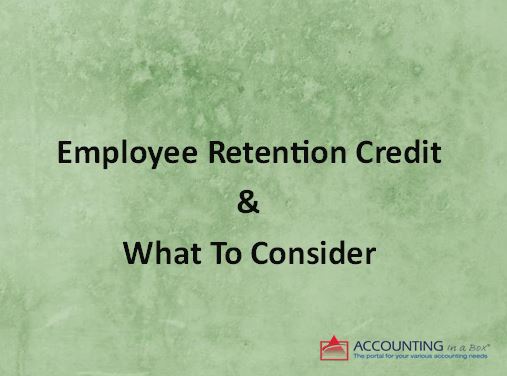Employee Retention Credit (ERC) and What To Consider
ArticlesPer a recent survey conducted by AICPA, 12% of respondents planned to take advantage of Employee Retention Credit (ERC) while 24% planned to apply for a PPP loan in 2021. Why has ERC become so popular?
There are many rules associated with the ERC. Because of its complexity and broad coverage, we do not cover all aspects of the relevant provisions in this article, but rather highlight some of the core characteristics of the program.

Tax Credit Amount:
Year 2020: Up to $5,000 per employee, per year.
Year 2021: Up to $7,000 per employee, per quarter.
Refundability:
Employee retention credit is refundable. It can also be used to offset future payroll taxes.
Factors to Consider:
The tax credit amount and refundability makes ERC a generous program. However, before applying for the ERC, there are factors that one should take into consideration. Some of these factors are:
– Denial of double benefits.
– Denial of wages paid to related individuals.
– Reduced deduction of wages.
– Potential higher tax bracket due to reduced deduction.
– Five-year statute of limitations (increased from three years)
Eligibility:
Generally speaking, the Employee Retention Credit provisions were designed to help employers whose operations were suspended, either partially or fully, by a government order due to COVID-19 OR had a significant decline in gross receipts OR began carrying on business after February 15, 2020.
There are specific criteria that a business needs to meet to be eligible for the ERC.
For more information, contact Dao CPA, PC, member of Accounting in a Box.
**DISCLAIMER The information provided in this article is for informational purposes only. It may be time sensitive and changed after publication. It is indicative only and non-exhaustive. It does not constitute professional advice, nor should it be considered a substitute for advice on your specific situation from your advisors.

